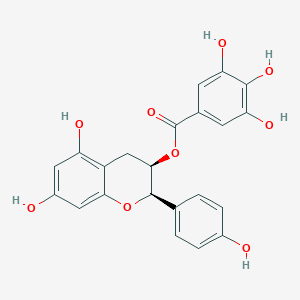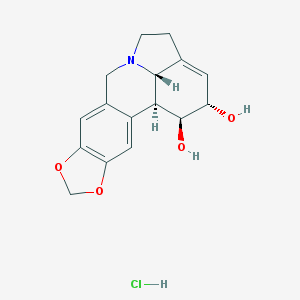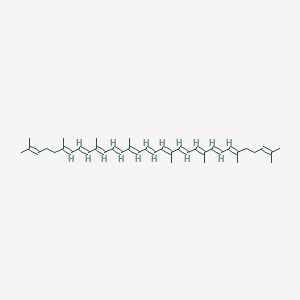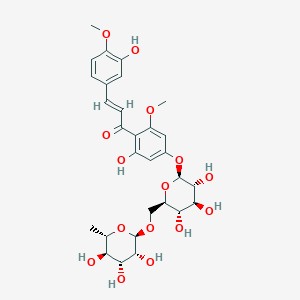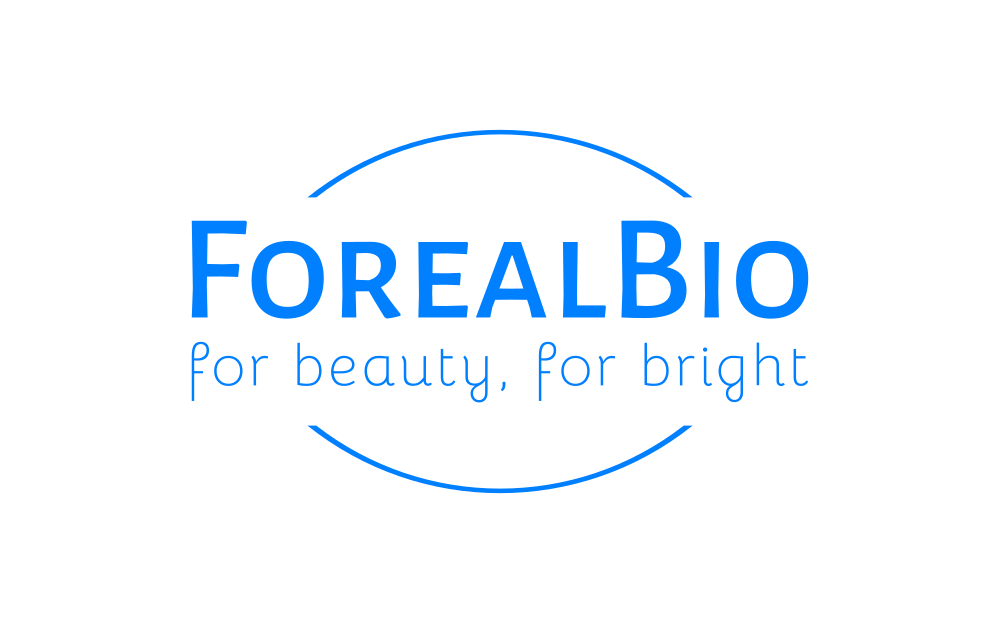Description
Epiafzelechin 3-gallate is a gallate ester formed by formal condensation of the carboxy group of gallic acid with the (3R)-hydroxy group of epiafzelechin.
Epiafzelechin 3-O-gallate has antioxidant activity.
Epiafzelechin 3-O-gallate is a specific compound that falls under the category of flavan-3-ols, a type of flavonoid. This compound is a derivative of epiafzelechin, with the addition of a gallate group. Flavan-3-ols are known for their presence in various plants and for having several health-promoting properties. Here are the main benefits and applications of epiafzelechin 3-O-gallate:
- Antioxidant Properties: Like many other flavonoids, epiafzelechin 3-O-gallate is believed to have strong antioxidant capabilities. Antioxidants are vital in neutralizing harmful free radicals in the body, thereby reducing oxidative stress and potentially lowering the risk of chronic diseases.
- Anti-inflammatory Effects: This compound may also exhibit anti-inflammatory properties, which can be beneficial in reducing inflammation-related conditions or symptoms in the body.
- Potential Anti-Cancer Effects: Some flavonoids have been studied for their potential anti-cancer properties, and epiafzelechin 3-O-gallate might also contribute to this effect by inhibiting the growth and spread of cancer cells.
- Cardiovascular Health: Flavan-3-ols can contribute to cardiovascular health by improving blood flow, reducing blood pressure, and decreasing the risk of heart disease.
- Neuroprotective Effects: There is some evidence suggesting that compounds like epiafzelechin 3-O-gallate could have neuroprotective effects, potentially beneficial in conditions like Alzheimer’s disease or other neurodegenerative disorders.
Applications:
- Dietary Supplements: Given its potential health benefits, epiafzelechin 3-O-gallate can be found in dietary supplements aimed at promoting general health, antioxidant support, or specific health goals like cardiovascular wellness.
- Functional Foods and Beverages: This compound might be added to functional foods and beverages for its health-promoting properties.
- Cosmetic and Skin Care Products: Due to its antioxidant properties, it could be used in cosmetic formulations, particularly in skin care products aimed at preventing or treating signs of aging.
- Pharmaceutical Research: As a subject of ongoing research, this compound might find application in the development of pharmaceuticals, especially those targeting inflammation, cancer, or neurodegenerative diseases.

